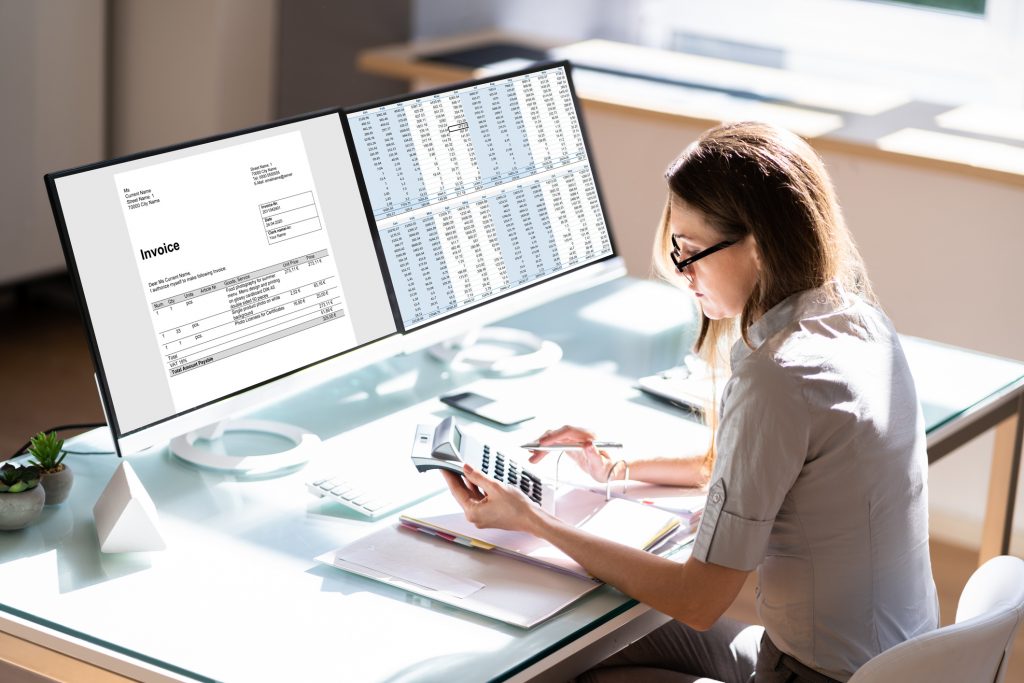If you are interested in working in an accounting environment, there are a lot of career paths to choose from. Some of the more apparent options include being a bookkeeper or accountant. However, you might not know that plenty of companies are hiring people for support functions like computer input and reconciliation clerk.
What Does a Reconciliation Clerk Do?
If you have ever taken a moment to reconcile your bank account, you have done what a reconciliation clerk does but on a smaller scale.
At the most basic level, a reconciliation clerk is responsible for reconciling the balance of business accounts to a source document using the detailed transactions/data included in the account. Reconciliation aims to identify errors that have caused the account balance to be erroneous or to prove that the account balance is correct.
This quasi-definition asks, “What kinds of accounts require reconciliation?”
While accounts will vary based on the business industry, the most common accounts that require reconciliation include:
- Bank and petty cash accounts
- General ledger accounts (accounts payable, accounts receivable, fixed assets, etc.)
- Sub-ledger accounts (support general ledger accounts)
- Customer accounts
It’s worth noting that a reconciliation clerk is a great “gateway” job if you are interested in progressing into higher levels of accounting.
What Types of Tasks Does a Reconciliation Clerk Perform?
A lot of the work that a reconciliation clerk does is detail work. They are required to look into small details to identify errors or prove accuracy. A reconciliation clerk will do the following tasks:
- Run general ledger and sub-ledger reports and customer account reports
- Compare account balances to a source document to identify potential errors
- Perform budget to real-time balance comparisons to identify material variances
- Research accounts with material variances
- Research detailed transactions by account for correctness
- Prepare erroneous transaction reports
- Prepare and enter adjusting journal entries to correct account balances
Where Does a Reconciliation Clerk Work?
There are many opportunities for reconciliation clerks. Some of the more common places to work include:
Small Businesses
While reconciliation clerk positions are available at the small business level, they are not considered standard. Why? Small businesses have smaller staff and must rely on employees to multi-task. That’s why accountants, A/P clerks, A/R clerks, and customer service reps are usually required to do their reconciliations. With that said, busy small businesses will hire a single reconciliation clerk to support the rest of the accounting staff.
Large Companies/Corporations
It’s much more common for large companies and corporations to segregate workload across more positions. Many reconciliation clerk positions will be found within large businesses and major corporations in support of accounting staff.
Financial Institutions and Banks
Everyone is sensitive about their money. That’s why financial institutions (brokerage firms, investment firms) and banks get a lot of customer account inquiries. It’s prevalent for such queries to be handled by a reconciliation clerk for research and resolution.
Accounting/CPA Firms
Accounting/CPA firms act as accounting departments for small businesses. Particularly during the “audit season,” there is a need for support people such as a reconciliation clerk.
What are the Skills Required for a Reconciliation Clerk?
As you contemplate starting a career as a reconciliation clerk, you may wonder what skills you would need to succeed. Here are some of the skills you should possess:
- Verbal and written communication skills
- Basic math skills
- Analytical skills
- Customer service
- The ability to work well with difficult people
- Independent worker
- Accounting education and experience
How Can Someone Prepare to Become a Reconciliation Clerk?
Most companies will consider candidates to have a vocational diploma focusing on accounting processes and procedures. You can fulfill that requirement by completing an accredited Accounting and Business Applications Program at Interactive College of Technology.
Here are some of the accounting functions that you will learn during an Accounting and Business Applications program:
Accounts Payable – collecting invoices for payment, assigning general ledger account numbers, inputting A/P vouchers, creating pay files, cutting checks, reconciling A/P reports, and handling vendor/creditor inquiries.
Accounts Receivable – collecting payments, assigning general ledger account numbers, inputting A/R vouchers, making deposit slips, reconciling A/R reports, and handling account collections and customer inquiries.
General Ledger – account analysis, preparation of journal entries, reconciliation between general ledger and sub-ledger accounts, preparing variance analysis.
Payroll – inputting employee personal/benefits/wage data, collecting timecards and wage adjustments, inputting pay information, processing payroll, and preparing payroll tax reports.
Office Automation – learning to use various accounting machines (computers) and popular accounting software products.
Want to Learn More?
Our Accounting & Professional Business Applications training program where you’ll learn the fundamentals of accounts payable, accounts receivable, payroll, general ledgers, reporting, data entry, and office automation.
So, let’s take the first step together! Contact us now to learn more.









